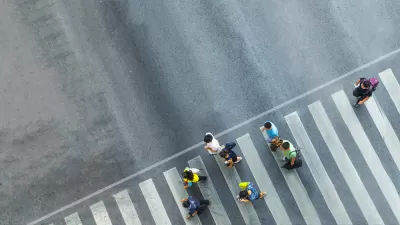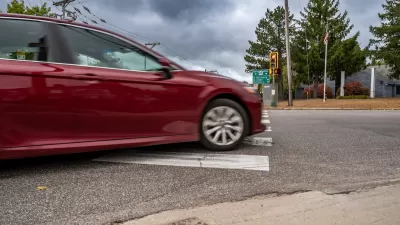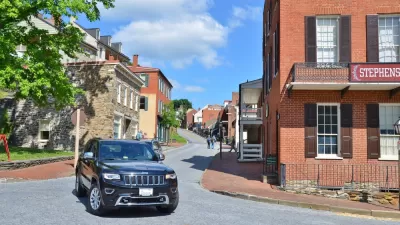A new federal program will direct resources to reducing traffic deaths, improving roadway safety, and encouraging a shift to sustainable transportation modes.

With traffic fatalities rising in the U.S. despite lower vehicle miles traveled during the pandemic, the federal Department of Transportation has released a national strategy to address traffic safety. As Madeleine Ngo reports, the department plans to work with states and local jurisdictions to direct resources to improving roadways and reducing drunk driving, as well as impose new regulations to improve traffic safety. The plan, known as the National Roadway Safety Strategy, keys in on five areas: "safer people, safer roads, safer vehicles, safer speeds and post-crash care."
Although questions remain about how much influence federal policy will have on local roadways that are largely controlled by local agencies, the program represents a fundamental shift in priorities. According to Transportation Secretary Pete Buttigieg, "The big first here is committing the department to the idea that only zero roadway deaths are acceptable, and then aligning all of our resources around that."
In an interview with David Zipper, Sec. Buttigieg said the federal government would employ "a mix of carrots and sticks" to hold states accountable for eliminating pedestrian and traffic deaths. Buttigieg emphasized the need for a "comprehensive strategy" that includes not just making cars and roads safer but also encouraging and supporting a mode shift away from private vehicles, which would also reduce congestion and carbon emissions, benefiting all residents.
FULL STORY: Transportation Dept. Outlines Plan to Address Rising Traffic Deaths

Alabama: Trump Terminates Settlements for Black Communities Harmed By Raw Sewage
Trump deemed the landmark civil rights agreement “illegal DEI and environmental justice policy.”

Planetizen Federal Action Tracker
A weekly monitor of how Trump’s orders and actions are impacting planners and planning in America.

The 120 Year Old Tiny Home Villages That Sheltered San Francisco’s Earthquake Refugees
More than a century ago, San Francisco mobilized to house thousands of residents displaced by the 1906 earthquake. Could their strategy offer a model for the present?

LA’s Tree Emergency Goes Beyond Vandalism
After a vandal destroyed dozens of downtown LA trees, Mayor Karen Bass vowed to replace them. Days later, she slashed the city’s tree budget.

Sacramento Leads Nation With Bus-Mounted Bike Lane Enforcement Cameras
The city is the first to use its bus-mounted traffic enforcement system to cite drivers who park or drive in bike lanes.

Seattle Voters Approve Social Housing Referendum
Voters approved a corporate tax to fund the city’s housing authority despite an opposition campaign funded by Amazon and Microsoft.
Urban Design for Planners 1: Software Tools
This six-course series explores essential urban design concepts using open source software and equips planners with the tools they need to participate fully in the urban design process.
Planning for Universal Design
Learn the tools for implementing Universal Design in planning regulations.
Ada County Highway District
Clanton & Associates, Inc.
Jessamine County Fiscal Court
Institute for Housing and Urban Development Studies (IHS)
City of Grandview
Harvard GSD Executive Education
Toledo-Lucas County Plan Commissions
Salt Lake City
NYU Wagner Graduate School of Public Service





























